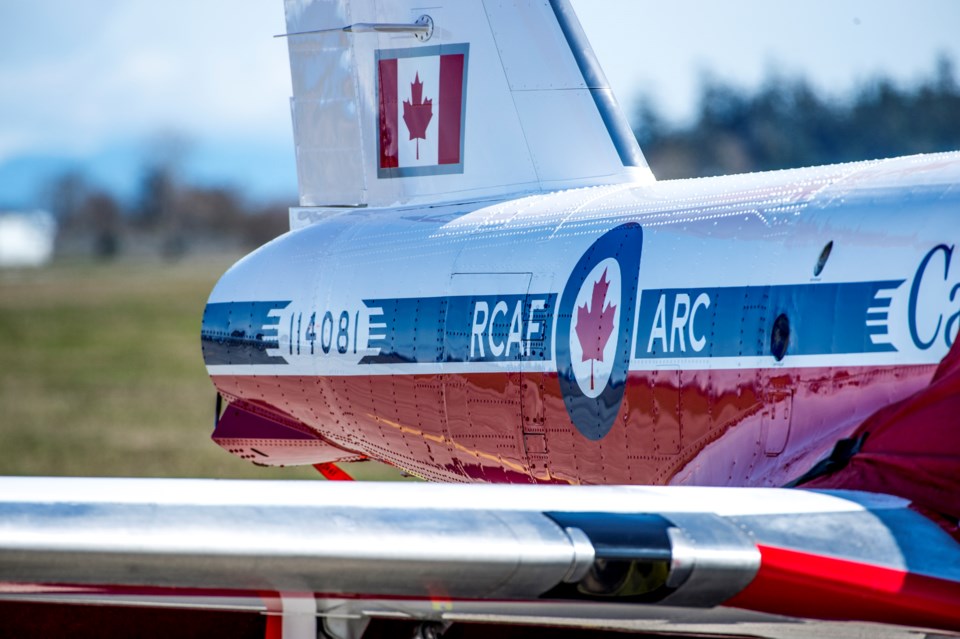With the Royal Canadian Air Force (RCAF) celebrating its 100th anniversary next year, the City of Moose Jaw has begun preparations to honour the occasion and the military branch’s connection to the community.
The heritage advisory committee discussed the RCAF’s birthday during its recent meeting, according to the group’s minutes presented during the Nov. 14 regular city council meeting.
City administration informed the committee that the municipality will light up city hall’s clock tower in blue starting April 1, 2024, the date the RCAF came into existence. The city also plans to commemorate the anniversary by planting tulips in Crescent Park and erecting a display of maple trees.
“Committee members agreed that they are interested in consulting with and involving local businesses and organizations in the recognition of the RCAC anniversary,” the minutes added.
While Canada had no air force during the First World War, many men served in either England’s Royal Flying Corps or Royal Naval Air Service. By the war’s end, more than 20,000 Canadians had served in a British Empire flying service, with roughly 1,400 dying in combat.
Canadian airmen established a record second to none: William (Billy) Bishop, Raymond Collishaw, Donald MacLaren and
William (Billy) Barker, for example, were among the top 12 “aces” of the war (scoring more than 50 victories).
Bishop, Barker, and Alan McLeod, an 18-year-old flyer from Manitoba, were awarded the Victoria Cross — the Empire’s highest award for military valour — for their actions.
A short-lived Royal Canadian Naval Air Service (RCNAS) and an England-based Canadian Air Force were casualties of the rapid demobilization after the war, according to The Canadian Encyclopedia website.
Between 1919 and 1924, Canada wrestled with creating a policy to govern the field of aviation.
Thanks to people such as John Armistead Wilson, a career public servant, an air board was created to develop aviation policy, rules and regulations. Moreover, the Canadian Air Force (CAF) was re-established as a “flying militia” using wartime flyers and surplus British aircraft.
In 1923, the air board joined with the Department of Militia and Defence and the Department of the Naval Service to form the Department of National Defence (DND).
On April 1, 1924, the air service was renamed the Royal Canadian Air Force (RCAF) — the Royal sobriquet having been approved by King George V in 1923, the website said. The RCAF consisted of a permanent full-time air element, a Non-Permanent Active Air Force (NPAAF) intended to train for a few weeks each year, and a reserve air force for national emergencies.
The RCAF made significant contributions during the Second World War and, by late 1944, reached its peak as the fourth largest Allied air force, with more than 215,000 personnel in uniform and over 18,000 dying in combat.
During the Korean War, the RCAF provided an air transport squadron, fighter pilots, nurses and other personnel to UN Command, the website said.
No. 426 Thunderbird Squadron ferried people and supplies throughout the war, including 599 round-trip flights between Tokyo and McChord Air Force Base in Washington State with the United States Air Force (USAF) Material Air Transport Service.
As the RCAF was heavily committed to NATO operations in Europe, no Canadian fighter squadrons were involved in Korea.
Yet 22 RCAF pilots flew with the USAF. By 1957, roughly 1,000 RCAF airmen had contributed to the UN mission in Korea during the combat or peacekeeping phases. This included 40 RCAF flight nurses who served on medical evacuation flights.
As of 2020, the RCAF consisted of 12,074 regular force and 1,969 primary reserve personnel, supported by 1,518 civilians, and operated 258 manned aircraft and nine unmanned aerial vehicles.
The next regular council meeting is Monday, Nov. 27.
In response to some providers blocking access to Canadian news on their platforms, our website, MooseJawToday.com will continue to be your source for hyper-local Moose Jaw news. Bookmark MooseJawToday.com and sign up for our free online newsletter to read the latest local developments.




